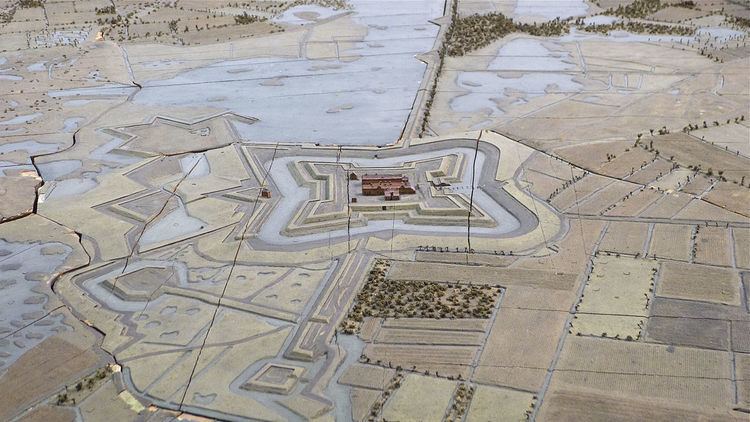Address Halsteren, Netherlands Phone +31 164 277 482 | Province North Brabant | |
 | ||
Hours Open today · Open 24 hoursWednesdayOpen 24 hoursThursdayOpen 24 hoursFridayOpen 24 hoursSaturdayOpen 24 hoursSundayOpen 24 hoursMondayOpen 24 hoursTuesdayOpen 24 hours Similar Moses Bridge, Het Markiezenhof, The Rolling Bridge, Langkawi Sky Bridge, Gertrudiskerk | ||
Fort De Roovere is an entrenchment near Halsteren (by the Schansbaan/Ligneweg (streets) that was part of the West Brabant Dutch Water Line. It is an earthen fort that goes through a wall (the Ligneweg) and is connected to Fort Pinssen. The fort is open from the ‘back’, and the ‘front’ consists of two bastions. The fort has a dry moat and the banks are overgrown with trees. In 1747, during the Austrian War of Succession (1740–1748) the fort was under siege by the French. This siege has been extensively documented. Eventually, the fortress Bergen op Zoom fell and the siege was abandoned.
Contents
Fort de roovere nederland
Renovation
Over the years 1920-?, the de Roovere fort has fallen into major disrepair. It has only recently been restored through contributions. In addition, a bridge was built to access the fort across its moat. The designers, RO&AD Architecten, felt it would be inappropriate to build a bridge over the moat, so instead, they decided to construct a partially submerged bridge, rendering it practically invisible. The bridge has taken on the name "The Moses Bridge", as it appears to have divided the moat's waters. This design (built using Accoya wood) allows people to cross virtually undetected at water level: only a few bobbing heads are usually visible. Its construction is entirely of wood waterproofed with foil.
A foundation has been established, Friends of Fort de Roovere, whose goal is to make sure the fort is not forgotten. In the middle of 2010, extensive renovation of the fort began with the removal of the undergrowth and a deepening of the old moat so that the fort could be more easily recognizable as such. The clearing of the area led to many local protests. Remarkably, very little to no interest was paid to archeological research as there should be traces of the French siege nearby. Local amateurs with metal detectors still regularly find cannonballs there, which must have come from the siege.
The improvements include recreational functions, and the site lies on several routes for cycling and hiking.
